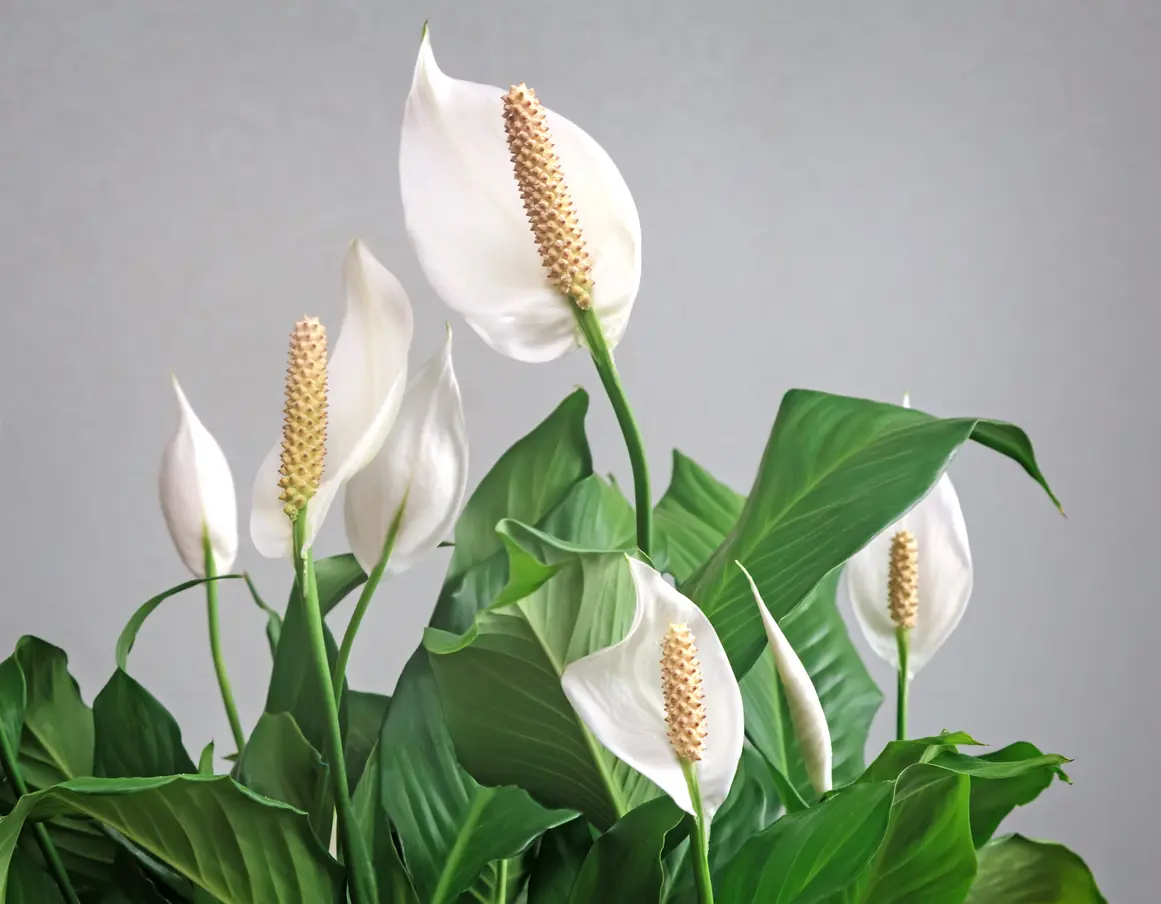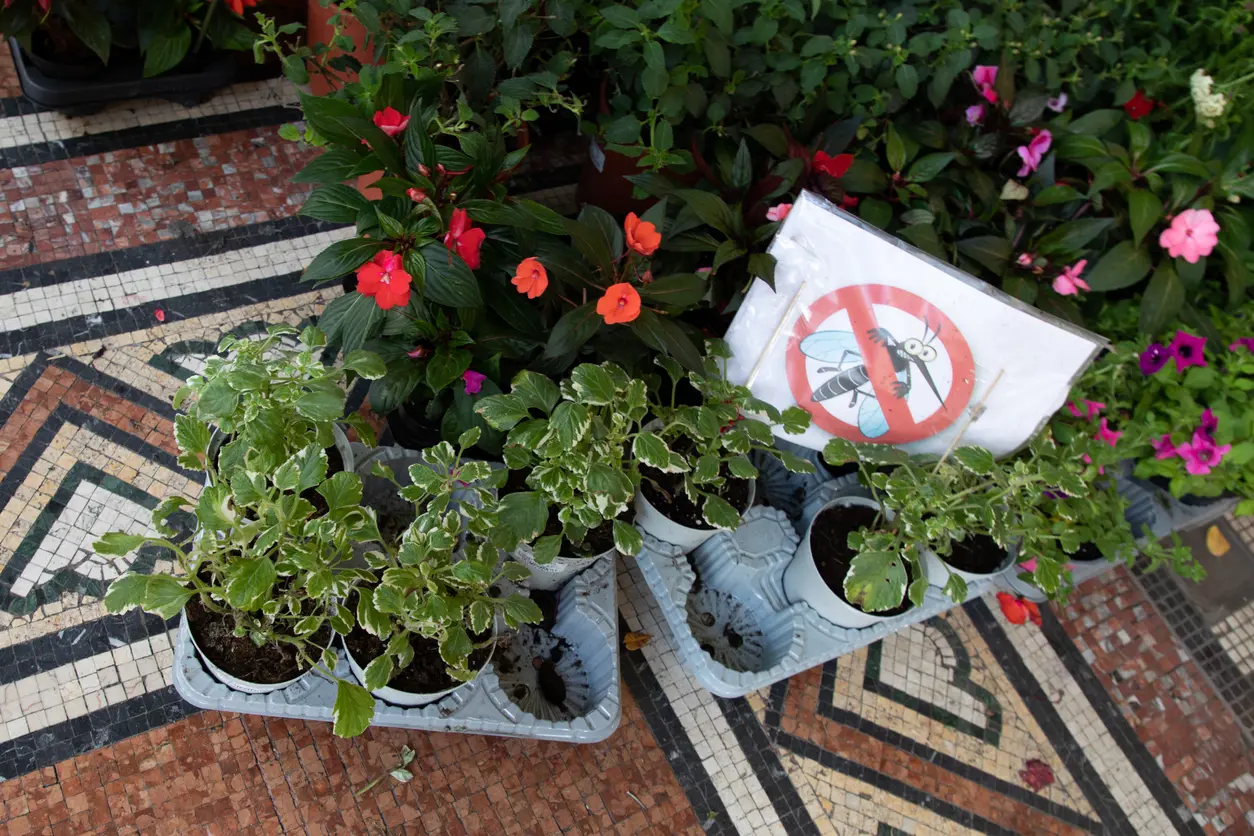
The Peace Lily isn’t a true lily, and that’s a good thing, especially for beginner plant parents. It’s one of the easiest houseplants to grow, and unlike true lilies, which can be highly toxic and irritating, the Peace Lily is only mildly toxic. That makes it a safer choice for homes with pets or young children.
The low light requirements and regular blooming of this houseplant have made it widely popular for indoor growing. Also known by its scientific name, Spathiphyllum wallisii, the Peace Lily features bright white flowers set against dark green foliage.
Learn everything you need to know about these houseplants, including how to encourage them to produce new flowers.
Benefits of the Peace Lily
The humble Peace Lily is one of the only plants shown to have a significant air-purifying effect, helping improve your family’s health by reducing volatile organic compounds.
In addition to their air-purifying benefits, these low-maintenance houseplants enhance your aesthetic without requiring much attention. The contrasting look of dark green foliage and bright white flowers adds an elegant touch to any room, even if that space lacks sufficient light or humidity for other types of houseplants.
Light Needs
Peace Lily plants can handle lower light levels than most houseplants. You can keep them in a room with only artificial light and still achieve good foliage growth.
However, if you want to encourage new flowers, you'll need to provide indirect but bright light. Direct sunlight burns the leaves, leading to brown tips and yellowing.
Placing the Peace Lily near a window covered with sheer curtains or blinds can provide the right amount of light without risking any burns.
Watering Instructions for Peace Lilies
Let the top inch of soil around your Peace Lily dry out before you water the plant again. Depending on the season and conditions in your home, you may need to water them once a week, twice a month, or even just monthly.
Bottom watering works best for soaking the entire root ball. Place the plant in a bucket or tub full of lukewarm water, letting it soak for at least 10 minutes before draining. Signs of overwatering include droopy yellowing leaves, while underwatering causes brown tips or limp leaves.
Humidity and Temperature Preferences
These houseplants thrive in average indoor temperatures, preferring a warm environment between 65°F and 80°F. They prefer humidity between 50% and 60%. That means you’ll rarely need to add any humidity to keep this plant happy. You can mist them occasionally to add a little humidity and clean the leaves without worrying about a pebble tray or humidifier.
If you want to keep your Peace Lily in a room with high humidity, such as a bathroom, adjust your watering habits to ensure the soil has a chance to dry out at least in the top inch.
Soil and Potting Requirements
Peace Lilies prefer a lighter, well-draining soil mix that is based on ingredients such as pine bark, peat moss, vermiculite, and coco coir. Avoid heavy mixes with too much compost, manure, or peat moss. Only a little is needed to help hold moisture around the roots. If you notice that your Peace Lily’s soil is breaking down into a fine powder and becoming compacted, it’s time for repotting to refresh the soil.
Speaking of pots, the best type for the Peace Lily is a glass, ceramic, or plastic pot that has generous drainage holes at the bottom. Slotted pots aren’t generally necessary, but they can help if you’re keeping the plant in a humid area or have trouble with root rot. Terracotta and unglazed ceramic pots can dry out the roots a little too quickly as well.
Fertilizing Peace Lilies
Unlike some other flowering houseplants, Peace Lilies don’t need a lot of fertilizer. Still, adding some when you repot the plant and a dose now and then during the summer can help encourage flowering.
Add a general-purpose, water-soluble houseplant fertilizer to your Peace Lily once a month during the warm season. Dilute the fertilizer to half the recommended strength to avoid build-up in the soil or burnt leaf tips.
Repotting Peace Lily Plants
There’s no need to repot these plants very often. They’re relatively slow-growing and prefer to have a relatively tight fit within their containers. If you see roots growing out of the drainage holes or the plant seems to wilt quickly despite regular watering, it’s time to repot and move up to a bigger container. Move up about 2 inches at a time (for example, replacing a 10-inch pot with a 12-inch pot).
When you notice the soil mix is getting worn out and compacted, you can repot the Peace Lily without changing pots. Just water well the day before, remove the plant from its pot, gently work some of the depleted soil free from the roots with your fingers, and repot with fresh soil mixed with a slow-release fertilizer.
How to Encourage Blooming
Peace Lily plants need plenty of indirect but bright light to start blooming. Move your plant out of a dark room or corner, or consider using a plant light for a few weeks to trigger the spathes to appear. Keep the plant lightly fertilized for a month or two before trying to trigger flowering. Raising the temperature and humidity a little can help, but don’t go too far, or you’ll put the plant back into dormancy. Soggy soil and a lack of repotting can also slow down the bloom cycle.
Peace Lilies won’t bloom back to back, so give them a few months off before attempting to trigger another set of flowers. As the plant grows larger, it’ll produce more spathes at a time, increasing from one or two to higher numbers.
Common Problems and Solutions
- Drooping leaves can indicate both under- and overwatering. Check the soil and adjust your routine.
- Yellowing leaves also tend to indicate water issues, too much sun, or a lack of fertilizer. Adjust the plant's placement and try lightly fertilizing.
- Root rot occurs when you use a heavy soil mix that holds too much moisture or water too often. Remove any sources of humidity, repot the plant in a lighter soil mix, and switch to a better-draining container.
- Common pests that affect the Peace Lily include fungus gnats, spider mites, mealybugs, and thrips. Use a general-purpose pesticide spray, remove them by hand, and keep the soil dry on top with bottom watering.
Toxicity Warning
While the Peace Lily is far less toxic to pets and children than most true lilies, it’s still known to irritate the mouth and stomach if consumed. Keep it on a high shelf or in a room that curious visitors can’t access. You can also try an open-topped plant enclosure to protect it from your pets while still enjoying its beauty in any room.
Propagation Methods for More Peace Lilies
Peace Lilies aren’t the easiest houseplants to propagate, but experienced plant lovers can still try. Here's one of the most reliable methods:
- Water the plant well to prepare the roots and loosen the soil mix.
- Remove the plant from its container, setting it on a potting table or other surface.
- Part the leaves and cut straight down with a sharp trowel, severing roots as necessary to create two or three sections.
- Pot up in a well-draining soil mix without fertilizer and water well.
- Keep it out of direct sunlight to avoid shock.
The divisions should recover and start growing within a month or two, transforming your single Peace Lily into multiple plants.
Cleaning the Leaves and Other Maintenance Tips
Unlike some other houseplants, Peace Lily leaves attract a lot of dust. This helps purify the air in your home, but it doesn’t help the plant thrive when debris blocks its air exchange process and reduces light exposure.
Wipe the leaves down once a month with a damp cloth, or try using a brush vacuum attachment weekly to prevent dust from accumulating in the first place.
FAQs About Peace Lilies
Why is my Peace Lily not blooming?
It may not have enough light, fertilizer, or warmth. Watering the plant too often and leaving the soil damp can also interfere with blooming. Try moving it into an area with bright and indirect light and providing half-strength doses of a general houseplant fertilizer once a month until you see blooms forming.
Are Peace Lilies toxic?
They’re not as toxic as many other houseplants, but you should still keep them out of the reach of kids and pets. The leaves and flowers are irritating to the mouth if chewed and to the digestive system if swallowed. Take your pet to a vet if you suspect it has consumed any parts of the Peace Lily.
What kind of water should I use for my Peace Lily?
Purified water or rainwater will work best. Avoid tap water or well water, especially if you have issues with dissolved minerals or hard water. The minerals can accumulate in your plant's soil and interfere with the roots' ability to absorb water.
Do Peace Lilies require high humidity?
While they enjoy the steam of a bathroom or an occasional misting, they don’t require a lot of humidity to thrive. If you place your Peace Lily in a humid environment, be sure to water it less frequently. Average home humidity is usually sufficient for these plants.
Picking up a Peace Lily can help freshen the air in your home while also adding a sense of natural beauty. Enhance your home’s aesthetics and develop your green thumb with one of the easiest houseplants and our guide to growing it. Explore our other guides on houseplants to further expand your gardening skills.





